We were lucky to catch up with Jason recently and have shared our conversation below.
Hi Jason , thanks for joining us today. We’d love to hear about a project that you’ve worked on that’s meant a lot to you.
Over 20 years ago, my brother-in-law graduated from Embry-Riddle flight school, and as a present I made him a ink-and-watercolor diagram entitled “A Primer of Pig Aviation”. There were anatomical labels of a pig aviator, some perspectives to show him coming and going, and something called Aerodynamic Disposition. I made comparison charts between the flight paths of a bird, a butterfly, a cannonball, and a pig. And, I wrote a couple paragraphs of Nonsense that made me smile, and which concluded with with “…pigs in flight can pose a significant danger to small children, pets (esp. goldfish), ant farms, tomato plants, and adults carrying groceries.”
Gary has the original hanging on his wall, but before I gave it to him, I scanned it and thought, ‘maybe I’ll make some prints of this’. And, since 2003, I have sold more copies of that print than any other.
Most importantly, the Primer evolved into an odyssey of Nonsense – Pig Aviation book prototypes, an entire series of pig aviation diagrams, and most recently, the Pig Air Corps. When asked what my deal is with pigs, all I can say is that the idea won’t leave me alone. I’m developing a training manual to teach pigs how to fly, and it has continued (through all its permutations) to amuse and inspire me.
This ridiculously long project (going on 25 years now), is meaningful because I’ve learned that it’s not just about pigs trying to learn to fly; it’s about me trying to make a children’s book – I’m trying to fly too. I had that realization in front of one of my illustration classes at Georgia State University, and when I said it aloud, one of my students said ‘that makes me want to cry’. And that seemed to make the idea solidify – it’s not just about pigs, it’s about all of us trying to fly. (Sounds so cheesy when I write it.)
After some frustrating interactions with literary agents, I invented the Pig Air Corps Recruiting Center, which I set up at my art festivals. All the book-idea-artwork has become prints for sale, as well as display graphics to instruct new recruits. There is an application to fill out, and a test to take (everyone passes). I have passports to stamp and miniature training manuals. I have buttons, and collectible pig aviator cards, and pocket spotting guides. There are people who come into my booth and say “I am SO signing up for this!” and then they do. And it brings me great delight that others want to fly too.
One day, a young woman can to my booth and looked at all the art and filled out the Recruit Application. I gave her the test (and she passed). I gave her a button and a manual and shook her hand and said “Welcome to the Corps!” and she burst into tears. “There are so many sh*tty things going on in the world, and this is just so happy and good.” She let me give her a hug, because no one has ever paid a higher compliment to my art. It was a Good Morale Day.

Great, appreciate you sharing that with us. Before we ask you to share more of your insights, can you take a moment to introduce yourself and how you got to where you are today to our readers.
I have drawn since I was small. I went to college for Architecture but it was not interested in me, so Design took me under its wing and transformed me. I drew all my problem-solving and meanderings, and began keeping them all in a series of hard-bound black sketchbooks. That was 35 years ago, and now I have 33 of those sketchbooks.
My career was in graphic design until my children were born, when I left a contract position to stay home fulltime with them. It was a great gift. That was when my sketchbook drawings began to come off the pages and become prints for sale, when I learned that others were drawn to the colorful, whimsical, curious world of my illustrations. I had always yearned to be a childrens’ book creator, like all my heroes of art and design and storytelling, so I began a long on-and-off relationship with SCBWI (Society of Childrens Book Writers and Illustrators). I learned I’m not a conventional storyteller or illustrator. I learned that my idea of a story is different than others’.
My humor and my playful way of investigating a design or illustration problem makes my work distinctive, intimate, and truthful. It is colorful, dynamic, quiet, and patient.
Being home with my children also made me brave enough to learn to teach, which I’m better at than anything else I do. For 13 years, I taught graphic design and illustration fulltime at several universities, mostly Georgia State University. My students taught me enormously, and I lived surrounded by ideas and potential, discoveries and challenges. Teaching has made me a better listener, evaluator, and cheerleader. I had to say no when I wanted to say yes. I had to be blunt and I had to be empathetic. I had to remind everyone that it’s just art, and that it’s also one of the most important things to do in our lives. Artists and designers help the world understand what the hell is actually going on, and what we’re capable of.
I’m proudest of both my own work and my students’ work in design for education. It is far more important graphic design than selling sneakers or real estate. It helps others learn, helps them grasp ideas and concepts to apply to themselves and where they dream of going. My biggest design inspirations? Sesame Street. Electric Company. Schoolhouse Rock.
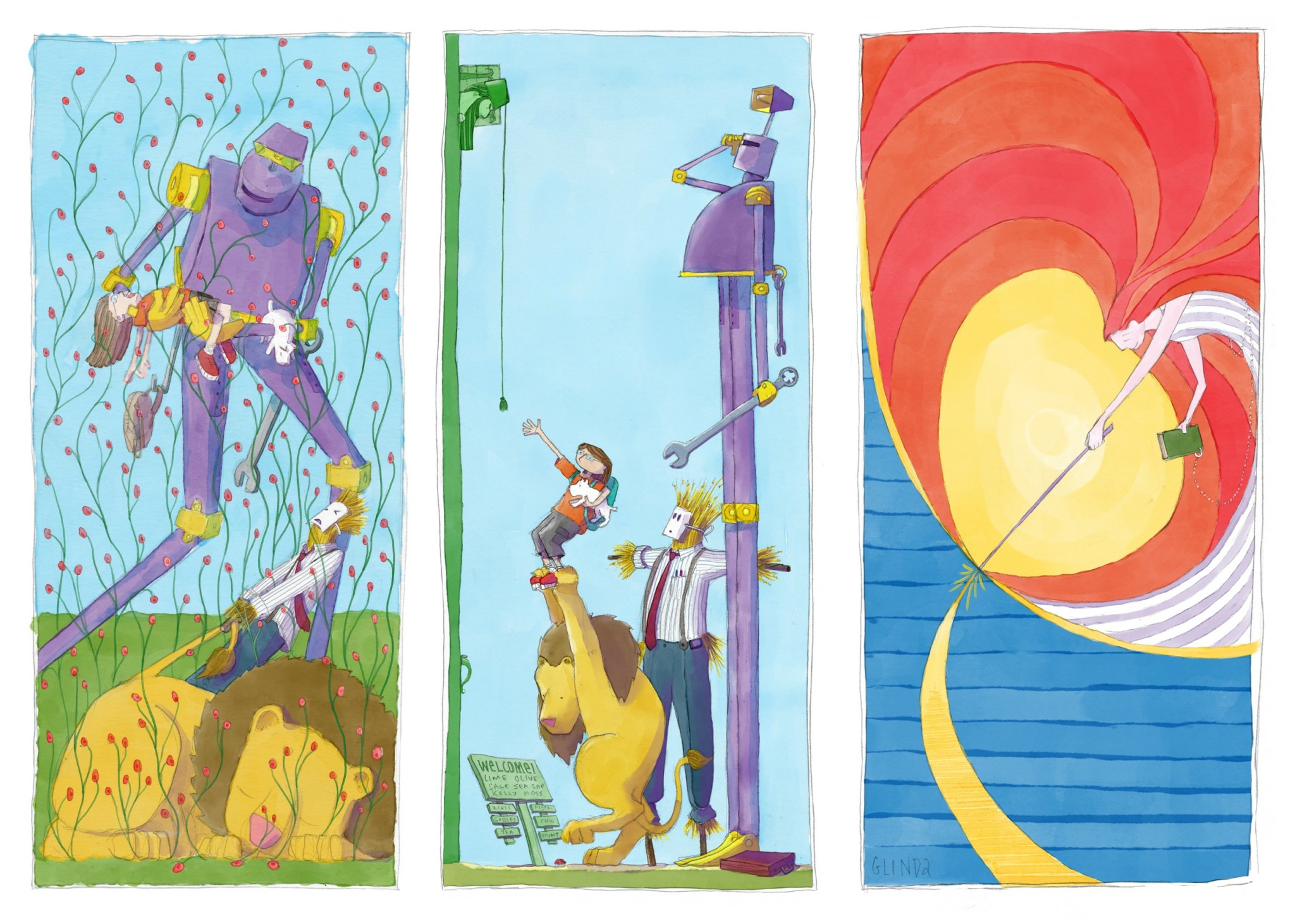
Can you tell us about a time you’ve had to pivot?
I feel like my entire career has been pivoting. As a younger designer, my motto was ‘always freelancing’, even amidst other jobs. That was also because my jobs changed every year or two, by my choice or by companies downsizing or changing direction. Between fulltime gigs, I might finally get some freelance momentum, only to have a fulltime opportunity appear, so all that momentum faded.
I’ve also pivoted from fulltime designer, to fulltime at-home dad for three years, to starting into teaching, to a 10 year teaching career, to a completely non-creative job but with a huge jump in focus on my artwork/illustration. None of this did I foresee or march towards; it was all responses to events and opportunities, and making my best decision I could.
One of my most sobering pivots was a job that just went flat for me. It was a prestigious small firm, with high-profile work and valued, valuable clients. It was the best paying job I’d ever had until that point. And I choked. I was intimidated by the big budgets, and the big brass annual report designs, and paralyzed by the something I couldn’t put my finger on. My ideas were bad, stale, weak. I lost my playful exploration mode that usually led me to innovative solutions. I made some serious mistakes. Nothing reflected the work or potential that I’d shown in my portfolio. And when we parted ways, I felt like I had lost my ability as a designer. It was terrible.
I went to a career counselor to figure out what else I was supposed to do. After answering questions and taking Meyers-Briggs (again), I was told I had potential to be a city planner, or an architect, or a graphic designer. So I went back to freelancing.

Have any books or other resources had a big impact on you?
Debbie Millman’s “Design Matters” podcast
Debbie has SO MANY PODCASTS. She’s interviewed a staggering range of creatives, which is always good for the generalist in me. I was inspired and awed by what I heard in her interviews with Chris Ware, Oliver Jeffers, Carson Ellis, Colin Greenwood, Judy Chicago, Jason Reynolds, David Byrne.
Adam Moss, The Work of Art: How Something Comes from Nothing
I found this at the library and loved it as soon as I read the introduction. It’s a collection of various creatives – wordsmiths, visual artists, playwrites, musicians, photographers, chefs, sculptors – who share the story of one project, from origins to completion. It feeds the hungry creative generalist in me, teaching me how others think/intuit/evolve through a project.
SCBWI Podcast (Society of Childrens Book Writers and Illustrators)
Theo Baker sounds so young and excited and a fanboy of everyone on the show. But his questions and observations are so astute, so heartfelt and authentic, and speaks from his own journey and struggles as an artist and storyteller. His voice and personality are just so perfect for the content. My most invigorating listens were Kate DiCamillo, James Ransome, Paul Zelinsky, John Parra, Cece Bell, and Shaun Tan.
Will Storr, The Science of Storytelling book
I have checked out a LOT of library books about creativity, writing, childrens’ books, illustration techniques, and countless books by great authors and illustrators. This is one of the few that stuck with me for some reason, and made me think differently about words and story and character and how I fit into all of that.
James Victorie, “Feck Perfuction” book
James has inspired me for years with his straight talk about clients, about creative work, about valuing our work, and having attitude. It does not all land for me, but mostly because he has the confidence that I don’t have.
Kent Nerburn, “Neither Wolf Nor Dog” book
I read this every year or so. A heavy, sobering series of conversations with a Native American elder, which illuminate how I live with the rhythms of the earth.
A.A. Milne, “Winnie the Pooh” books
Always good for morale after the world has kicked me around. The playful language and gentle problems and child-like logic always delight me.
Contact Info:
- Website: www.jasonsnape.com, www.pigaircorps.com
- Instagram: ridiculorum, pigaviation
- Linkedin: Jason Snape
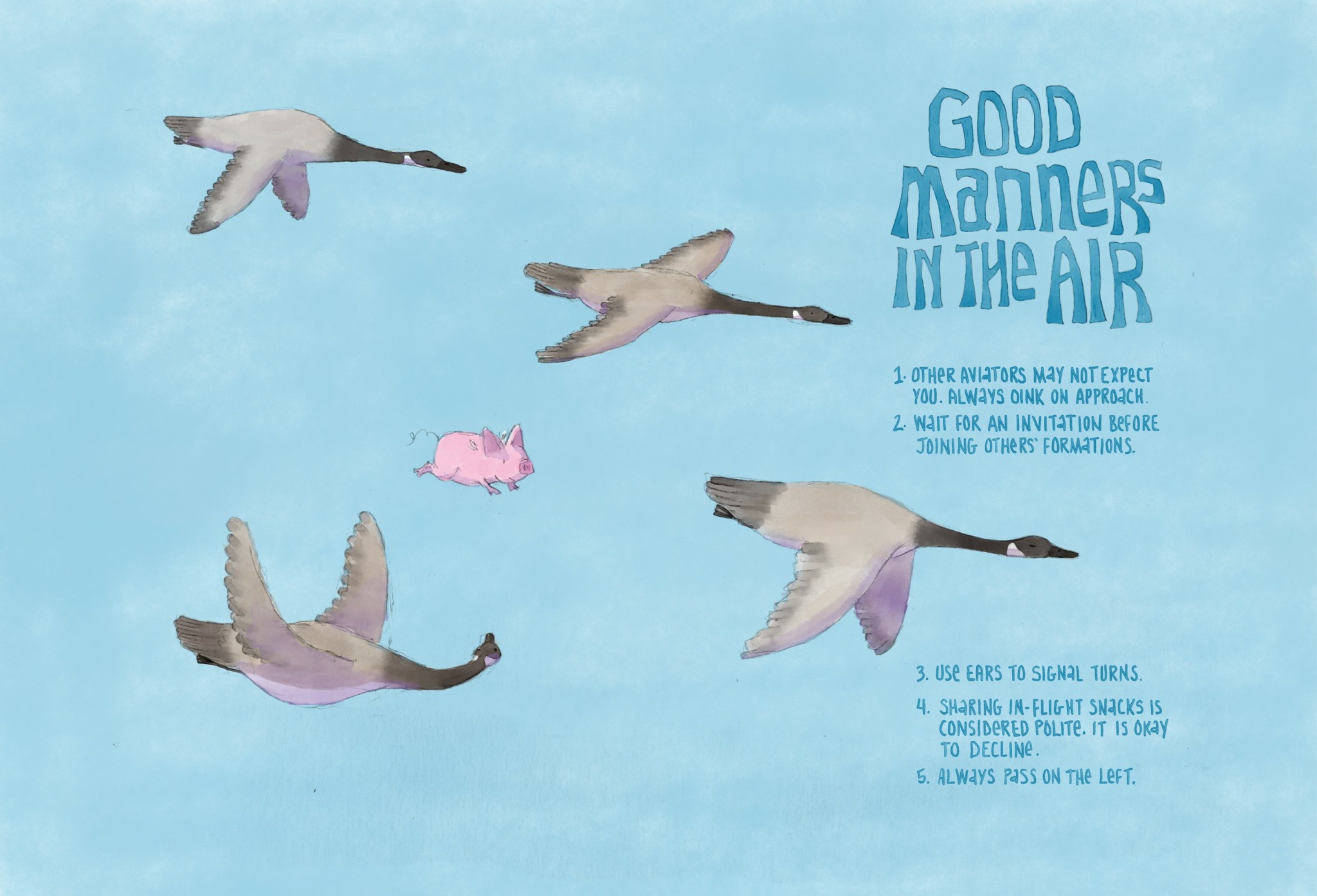
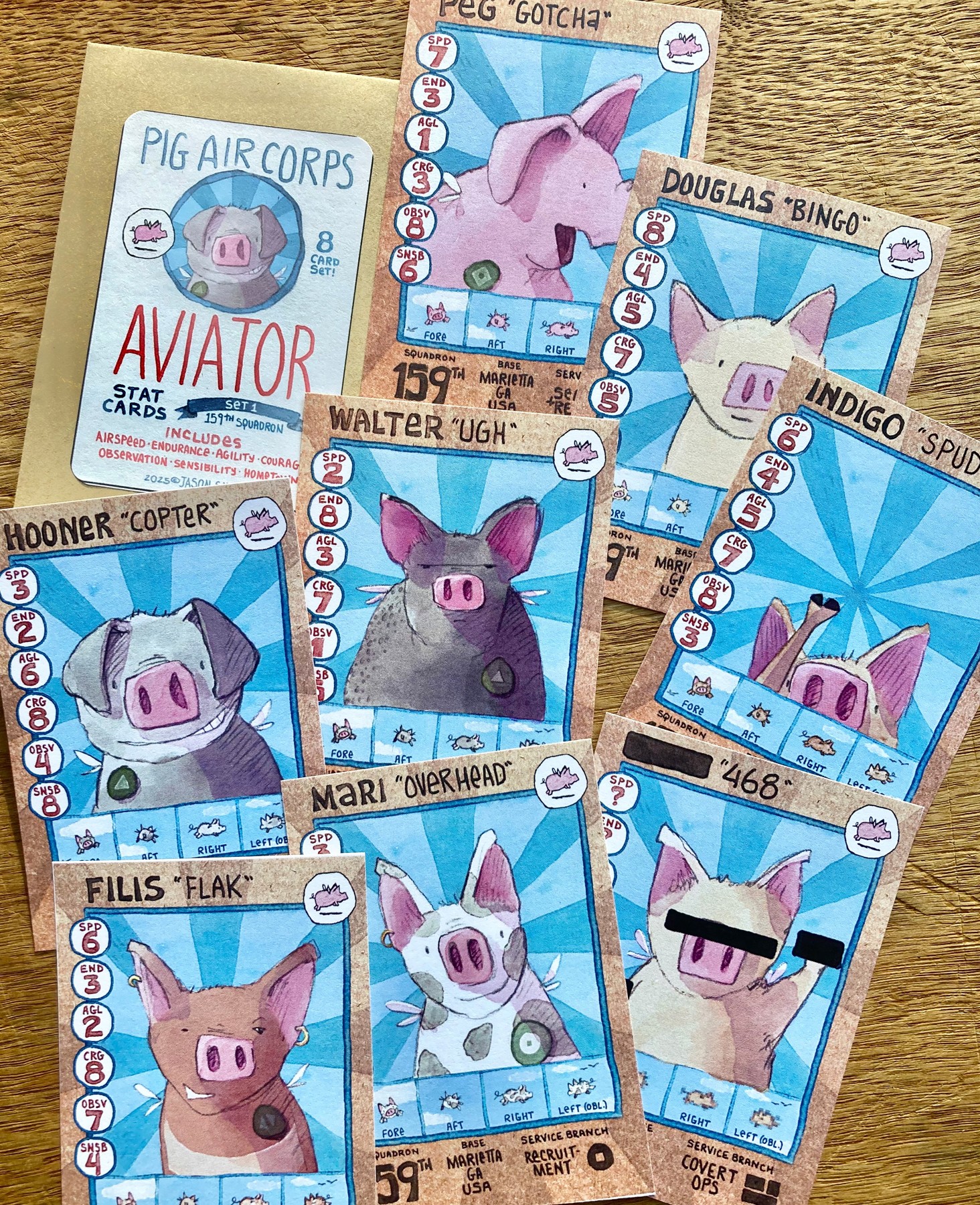
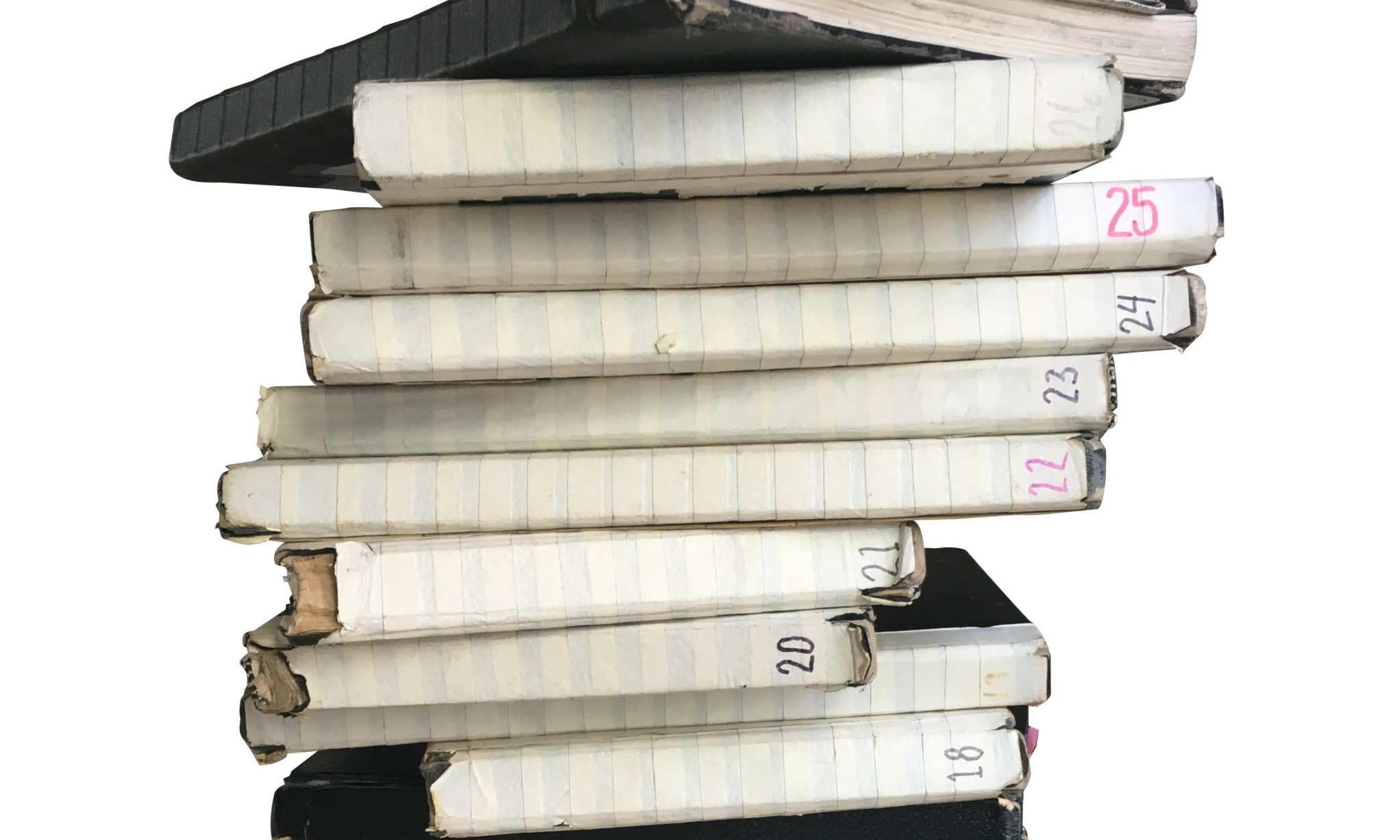
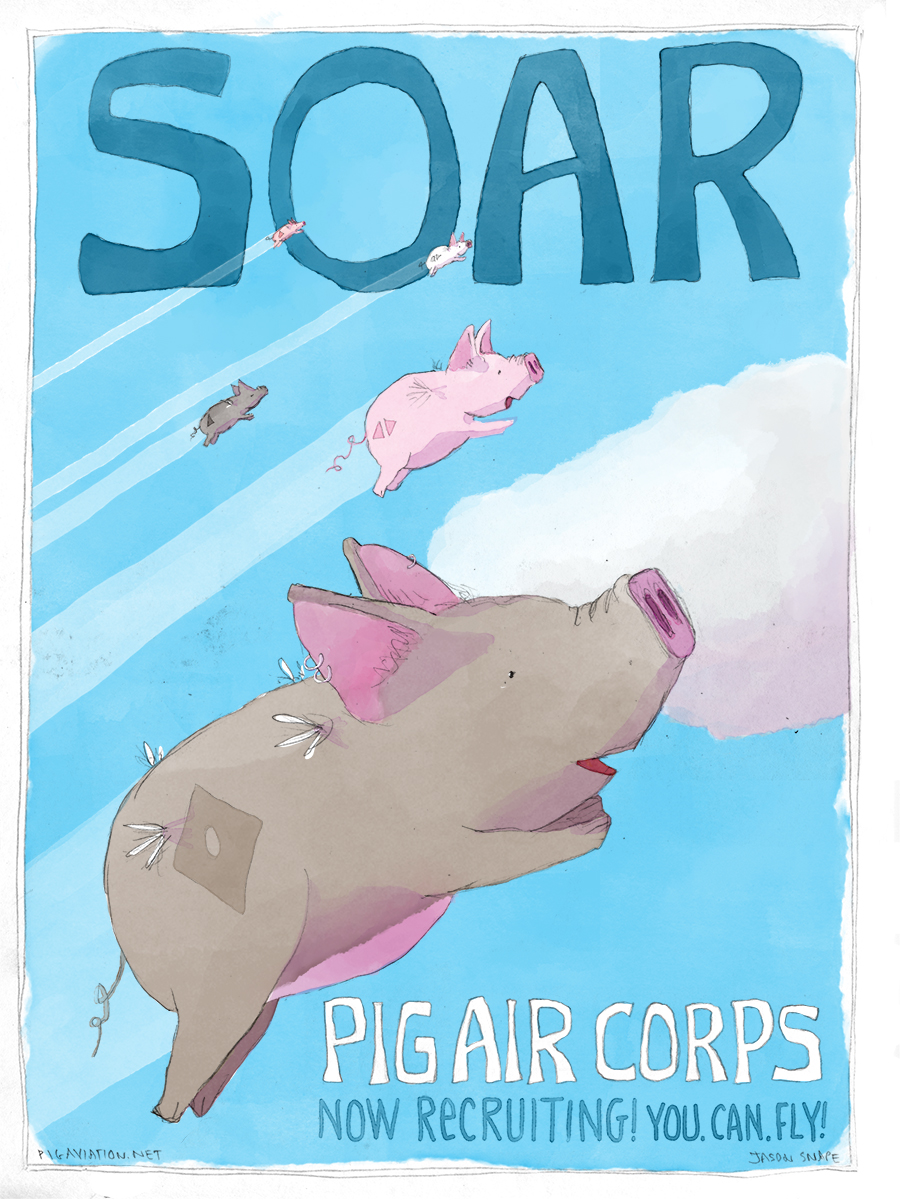
Image Credits
Studio photo by Jeff Rooney/Capacitor Network


